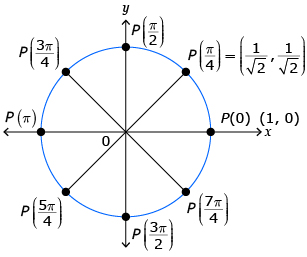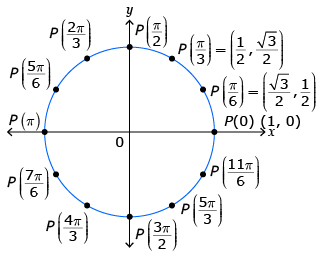Lesson 3 Summary

© 3d_kot/35917383/Fotolia
The equation of the unit circle is x2 + y2 = 1 with its centre at (0, 0) and radius of 1. This equation can be derived from the Pythagorean theorem. This equation can be used to determine if a point is on the unit circle or to determine the value of the x- or y-coordinate when given one of the values.
You looked at specific points on the unit circle that correspond to eight or twelve equal parts of the circle. You wrote the coordinates of the specific points as exact values. Patterns can be used to help determine these points on the unit circle. The unit circle can be used to determine specific rotational angles when given the coordinates of a point and vice versa.
Source: Pre-Calculus 12. Whitby, ON: McGraw-Hill Ryerson, 2011. Reproduced with permission. |
Source: Pre-Calculus 12. Whitby, ON: McGraw-Hill Ryerson, 2011. Reproduced with permission. |
In the next lessons you will see how the unit circle can be used to determine both angles and trigonometric ratios.

